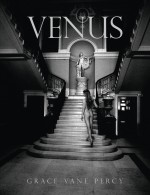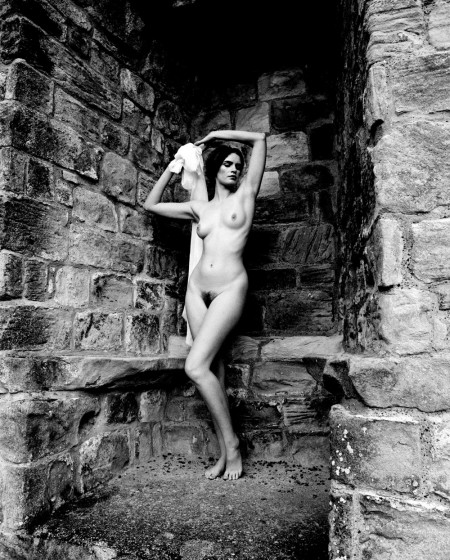VENUS OBSERVED
by Florence WalkerVENUS is the antidote to the subversive and edgy nude photography that dominates the art bookshelves. These photographs of nude female models set in grand English houses taken by Grace Vane Percy are worthy of the great goddess herself in their beauty and purity. The classical nature of her subjects is enhanced by photographing them in black and white on film, the most organic of a modern artists’ arsenal of technological techniques. Most of the poses are derived from traditional poses attributed to Venus from classical Greek and Roman sculpture. Text accompanies the images detailing the iconography, poses and importance of the ancient deity. This book emphasises the sheer beauty of line and moulding of the female form.
The photographer Grace Vane Percy was classically trained in drawing and sculpture in Florence before committing herself to a life behind the lens. Her skill is demonstrated in the velvet texture of her chosen Veneres. Her composition draws the eye towards the naked figure and its context in the neoclassical settings. In some examples, the Venus is not immediately apparent; Vane Percy’s elegant style blends her subjects into their surroundings making her real-life models ever more statuesque. The small and subtle range of tones in each photograph give the subjects the appearance of marble but their hair gives away their reality. It is as if Galatea was changing from human flesh to marble before your very eyes.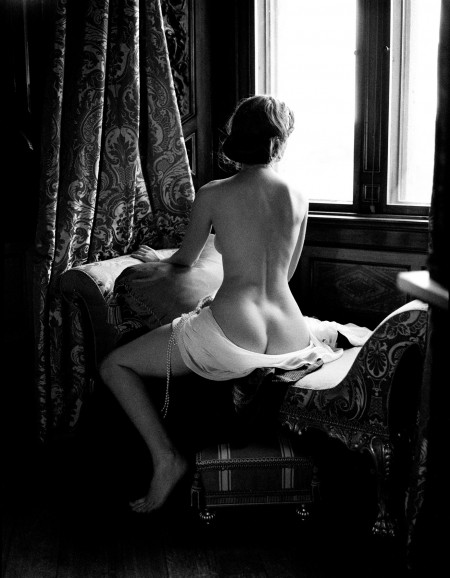
Vane Percy has avoided the temptation to render the models as actual statues. Pubic hair is neat and on show. She could have had her subjects bleach their pubic hair or dust it white, or indeed Photoshop it out altogether. The presence of electric fuzz adds to the feeling that this book not only honours Venus but all women who ignore the unrealistic demands of modern culture on their bodies. The women photographed are not professional models. As a result, they have everyday figures, with hips, curves and natural breasts. Their figures hark back to a time before Photoshop when having love handles was a sign of being well fed and healthy and there was no danger that you would be excluded by the fashionistas. Vane Percy’s choice of models is a statement in itself. She has avoided the highly polished appearance, no-warts-at-all image of beauty in glossy magazines and in doing so reclaiming a more organic ideal of beauty for women everywhere.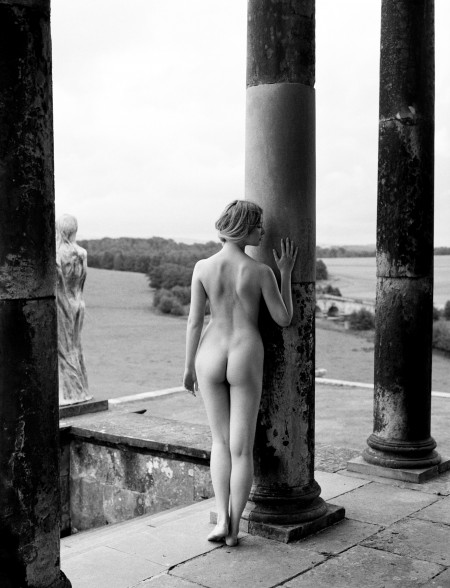
These images celebrate the neoclassical architecture of English country houses. Viewing the houses in this manner – with a human figure for scale – is the correct way to appreciate the proportion of these houses. This project lets these historically important places live their purpose once again as beautiful backdrops for the human form. The use of alcoves repeatedly in this project might very well have ended up being gimmicky but the sensitivity and tone of the work stops this from being the case.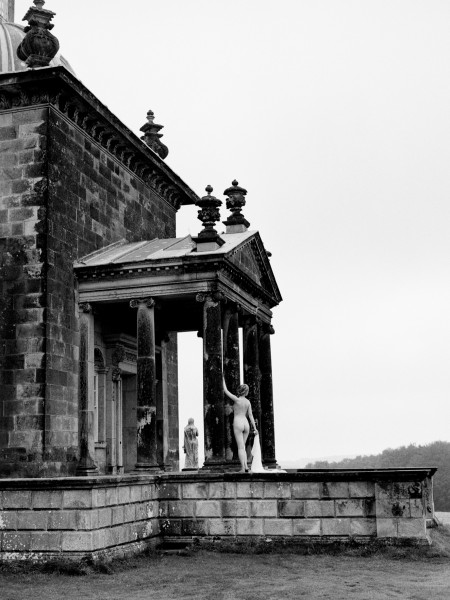
The text is brilliantly researched and informative. Vane Percy gives us an introduction that successfully argues Venus’ beauty to be more than skin-deep. A comprehensive guide to the mythology of Venus is expertly illustrated by Katherine Hardy to remind the reader of Venus’ various incarnations. We also learn about Venus’ poses and their significance and a history of the houses where the photographs are taken. Readers can also discover some fascinating stories of the production of these photographs. In Houghton Hall the plinth where Girardon’s Laocoön stood was empty for the first time in 300 years. This allowed the photographer to make use of the plinth designed by William Kent while its usual occupant was away on loan.
At the heart of this project to photograph women nude in English country houses is a discussion about Venus as a role model for women and as an icon for men. Typically Venus is above the viewer’s eye level, either on a pedestal or high on a wall or carved. Her gaze is focused in the distance. This gives her the demeanour of not particularly caring what the viewer thinks. For women, Venus is a reassuring entity, recognition that they are not simply objects of desire. Her mythology gives her the identity of a mother, daughter and someone whose intelligence and cunning is not to be underestimated. For men, her nude body is undoubtedly titillating and erotic and yet Venus is above objectification. For while she is nude, she is not naked.
VENUS, by Grace Vane Percy, Quartet, 128 pages, hardback, £50.00, ISBN 9780704373655